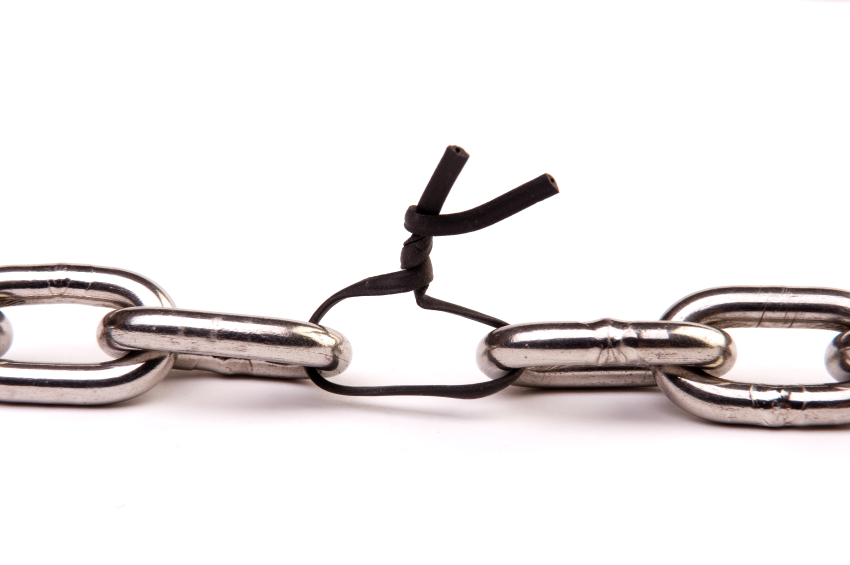 Often, when I begin working with a new client, we sit down and talk about their “points of failure.” You know, those critical “things” that we depend on each day to run our business and, if they were suddenly gone or became broken in some way, would take some serious time, effort, money (or all three!) to recover from.
Often, when I begin working with a new client, we sit down and talk about their “points of failure.” You know, those critical “things” that we depend on each day to run our business and, if they were suddenly gone or became broken in some way, would take some serious time, effort, money (or all three!) to recover from.
A POF can be a person, a place, a piece of equipment, or a vendor. It can be a process you rely on every day for some aspect of your business. If you don’t address one of these POFs, then it won’t (usually) put you out of business…but the adjustments you would have to make, the money you would have to spend, and the time it would take to recover would definitely slow you down for days (or longer).
For solo professionals (and even many small businesses) like you, the number one danger zone in the world is your computer. Without this, you’re stopped in your tracks.
I know, you’ve probably got your data backed up and you’ve never lost any data, so you might be thinking that you’re all set. Well, sort of. If your hardware were to fail, and you had no backup, you’d still be at a dead stop until you could get a replacement.
This is what happens when you need to buy a new computer (even if all your data is backed up):
- You stop working.
- You go to the store and buy a computer.
- You look for all your applications that are on CDs.
- You spend hours downloading your apps from the cloud.
- You hunt for the activation keys and serial numbers that you need to activate your software.
- You download and install the plugins for your browsers.
- You search on the web and install the drivers for your printer and any other hardware that you use.
- You scrounge around for the passwords that your operating system remembered for you.
- You restore your data, hoping that your backup software was configured correctly.
- You reinstall your anti-virus software.
- Over the next few weeks or months, you make adjustments and tweaks to your software until everything is back in working order.
And voila! You’re back up and running…finally.
Think about how much easier it would be if you had a second, backup machine in your office. Then, the process would look like this:
- You stop working.
- You move over to the other machine.
- You start working again.
Done.
So, do yourself a favor in 2015: buy a backup computer. Mine cost $500. I keep all my data in the cloud and, if anything were to happen to my primary computer, the only thing that would slow me down would be waiting for Dropbox to sync the files that I worked on today. Actual time? 5 minutes.
To figure out if you can afford it, take your hourly rate and multiply it by a week or more. If you’d make more than $500, get in your car now or visit your favorite online store and pick one out!

Here’s something for you to think about, Belinda. I do have a backup computer, a laptop to match my desktop. It matches in all respects except one: I have a file called “My Dropbox” on the desktop. I also have a file called “Dropbox” on both the laptop and the desktop. “Dropbox” appears to have space limitations. “My Dropbox” seems to have plenty of space. Given that I mostly use the desktop computer, a lot of files have ended up in “My Dropbox” so that when I need to access them in the laptop (as in my bi-weekly trips to Florida and back), they’re not available. I need to figure out how to share “My Dropbox” with my laptop. Happy to go off-line for the answer. Many thanks, Brad
Hi Brad – thanks for your comments. There are a couple of things that might be happening here…
You might have two different Dropbox accounts. Check to see if when you login to Dropbox on your laptop that you’re using the same login info as your desktop.
Another thing to consider – when you turn on your laptop after it being off for days or weeks, Dropbox needs some time to sync and download the files that are on the cloud down to your laptop. Depending on how long you’ve been unplugged – that could take several hours.
You might also check your laptop to see if there is room on your hard drive to download the files – I ran into this issue before when using an older laptop. The space needs to be available on the Dropbox cloud – and locally on your hard drive.
In any case – give me a call and we can figure it out!